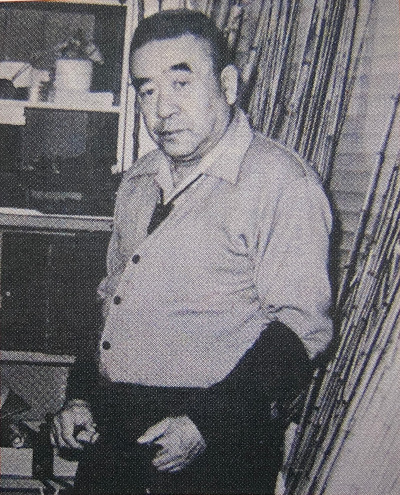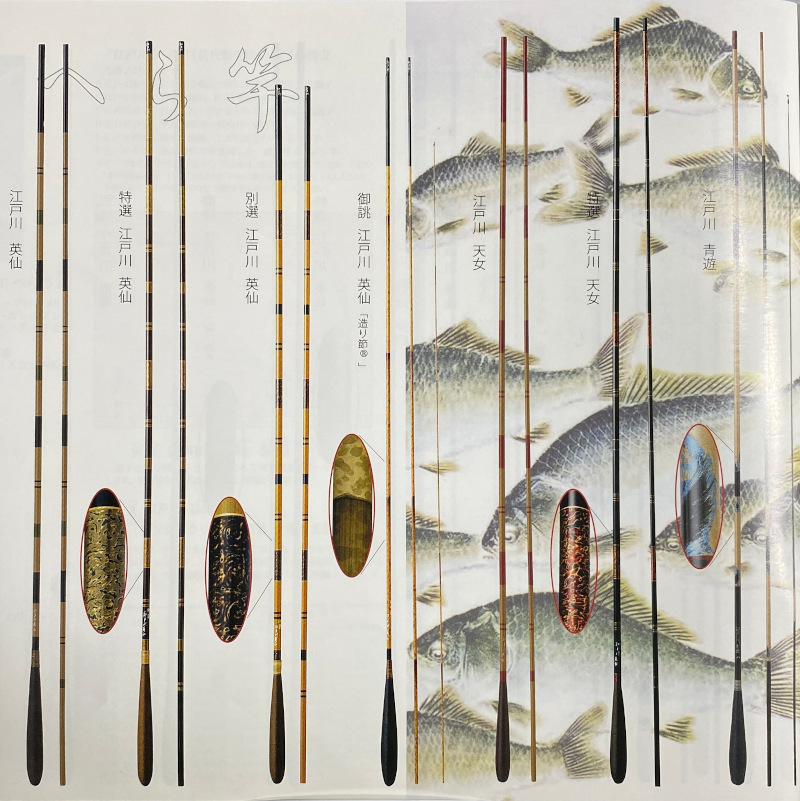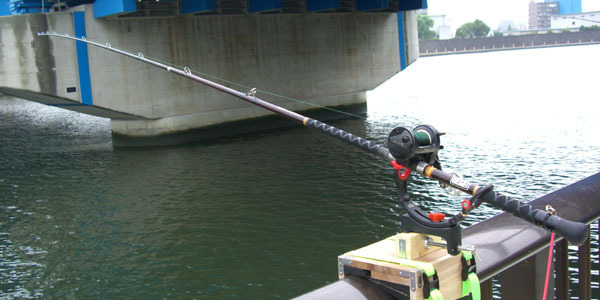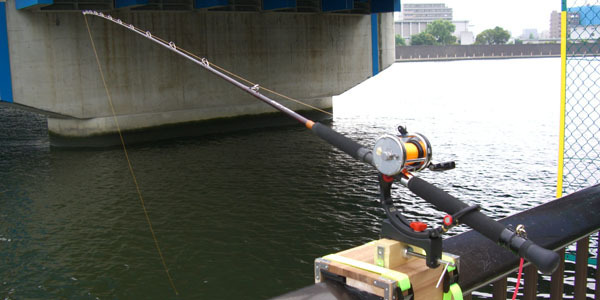In this content, we will introduce the process of making a carp fishing rod by applying the manufacturing techniques of Edo wazao (traditional Edo-style fishing rods) by Namitsugi Cob-san. Cob-san learned the techniques from Edogawa the 2nd, a master craftsman of wazao, and created his own unique fishing rod.
Edo wazao is a fishing rod made from bamboo, a special product of Japan, and it is said to have been made since the Edo period (around 1788). Since then, the manufacturing techniques have been passed down through generations, and in modern times, it has been certified by the Ministry of Economy, Trade and Industry as a traditional craft of Edo (Tokyo).
Namitsugi Cob | 21 Sep. 2008
I encountered a traditional Japanese fishing rod called "Wazao” 25 years ago at "Sakurai Fishing Tackle," which was near my workplace. The store displayed high-quality Wazao, with various materials for the rods, including bamboo, neatly arranged. At that time, I was a member of a Herabuna fishing club, and I often visited the store for visual enjoyment.
One day, a well-built man who was making Wazao at the storefront approached me and said, "Why don't you try making a rod with bamboo?" When I responded, "I'm afraid bamboo might break," he smiled gently and said, "A rod is not something that breaks easily." He started joining the sections of a delicate bamboo rod, labeled as a "not for sale" item, neatly packed in a paulownia box. Then he said, "Pull the tip of the rod with all your might." Although I was afraid it might break, I hesitantly pulled, and he urged, "Stronger! Stronger! Even more!" It was an incredibly high-quality rod labeled as a "not for sale" item. I still vividly remember the immense strength it required. And guess what happened? Instead of breaking, the rod gracefully curved, exhibiting an extraordinary resilience that I never expected from such a slender bamboo rod.

Hiroshi Sakurai (1910-1995) - Edogawa the 2nd
The person I met that day was Edogawa the 2nd, a renowned master. The intricate patterns carved on the handle and the seamless joints of the sections made it a magnificent work of art. That day, when I held one of Edogawa's masterpiece rods in my hands, marked the moment I encountered Wazao and became captivated by its allure.
On that same day, I had the bamboo material for a 13-foot Herabuna rod cut, which was quite an expensive purchase considering my salary at the time. However, I had no hesitation thanks to the 2nd's confident and overflowing smile, saying, "As long as I'm here, I won't let you fail." I stepped onto the path of Wazao making.
"The essence of a rod lies in its flexibility." These words were often said by the 2nd. I also frequently heard the phrase, "A well-balanced rod doesn't break."

Wazao "Edogawa", Sakurai catalog
Since bamboo is a natural material, the compatibility between the bamboo sections is crucial when constructing a jointed rod. Simply aligning the thickness at the joints doesn't make a good rod. Inconveniences arise from variations in stiffness or thickness, resulting in an imbalanced product. Only when all aspects such as stiffness, thickness, and alignment are matched does the rod achieve balance and produce a beautiful action. If pursuing the aesthetic beauty in the final product, factors like the absence of bamboo twists, the beauty of the joints, and the appropriate number of sections come into play. Achieving all of these requires a considerable amount of time, effort, and experience, even before considering the material selection.
I progressed from fishing for Herabuna to sea fishing (on a boat) and enjoyed using my self-made Wazao for small-scale fishing in Tokyo Bay. However, for offshore fishing, which often involved chumming, I couldn't use traditional Wazao, so I relied on carbon fiber jointed rods. The words of Edogawa's second-generation, "The essence of a rod lies in its action," were always in my mind. When choosing glass or carbon rods, I disregarded brand names and designs, focusing on the rod's action.
It has been two years since I started specializing in carp fishing. At that time, it was an unfamiliar field to me, and I initially followed the advice of fishing tackle shops, starting with a telescopic rod and spinning reel combination. However, I still had a strong attachment to the rod and was drawn to the action of jointed rods. I disregarded the inconvenience of transportation and began using jointed Rock bream rods, which I still use to this day.
The name "Namitsugi Cob” originated when I participated in the MCF JAPAN offline meeting for the first time, and Borahide-san gave it the name after seeing my rod. Currently, I prefer DAIKO's Striped beakfish rods and have two of them. Of course, they are jointed rods.
Now, let me introduce the "Sumida River Special" rods. They are made of glass material, not lightweight carbon, with a focus on the action when hooking a fish and the aesthetic appeal of traditional Japanese rods. To be honest, buying a new rod would be much cheaper. I put a lot of effort into various aspects to the extent that you might think, "Would you go this far for a glass carp rod?" There are no two identical rods due to the selection of materials and the emphasis on bringing out the characteristics of each material. Naturally, there are no detailed design plans. The position of the reel seat is determined based on personal preferences, and the guide placement depends on the rod's final action, which can only be determined after completion. I use Urushi lacquer for the paint (specifically, Urashima's premium Urushi lacquer).

Sumida River Special 1: Glass material, 2 sections, 8 feet

Sumida River Special 2: Glass material, one-piece, 6 feet
I would like to emphasize that rod making is purely my hobby. There may be mistakes or unnecessary steps from a professional perspective. If you notice anything, please feel free to point it out. Also, any questions are welcome, and I will answer them to the best of my ability. I hope my rod making journey can be a reference for all of you.
Currently, I have completed:
- Sumida River Special I (glass material, 2 sections, 8 feet): 3 rods
- Sumida River Special II (glass material, one-piece, 6 feet): 1 rod
- I haven't had the opportunity to catch fish with them yet. I will inform you about the performance once I have some fishing results.